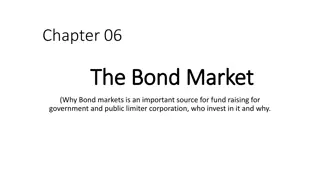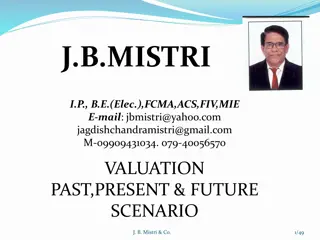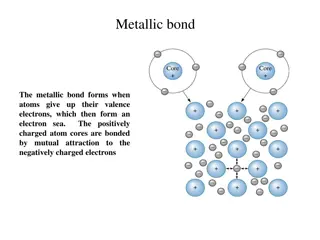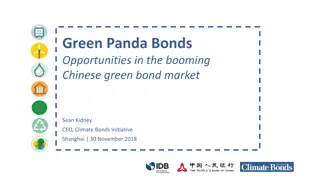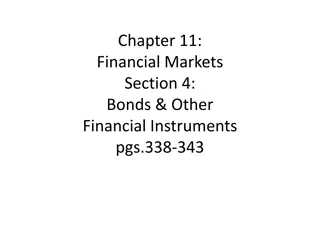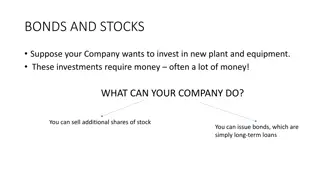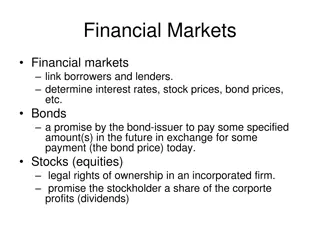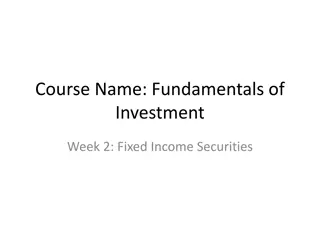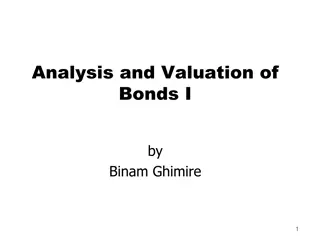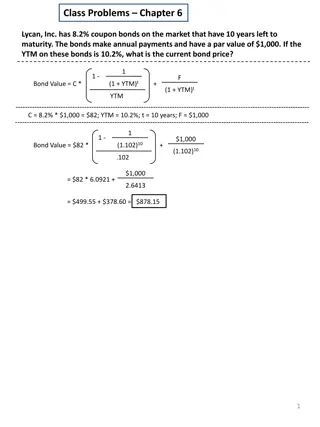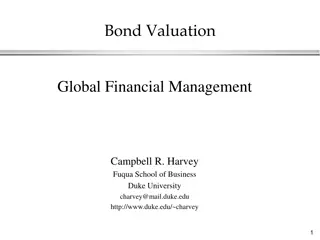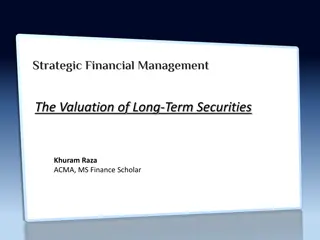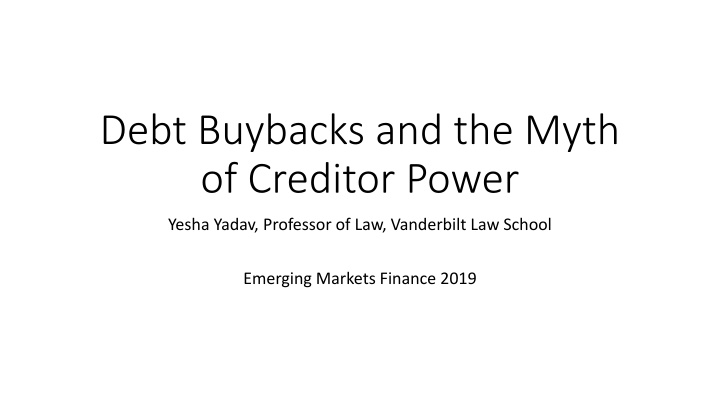
Bond Valuation and Types of Bonds
This comprehensive guide covers the definition of bonds, types of bonds including zero-coupon and self-amortizing bonds, bond issuers like government agencies and corporations, and detailed insights into U.S. Government bonds and Treasury securities, providing valuable information for investors and financial professionals.
Download Presentation

Please find below an Image/Link to download the presentation.
The content on the website is provided AS IS for your information and personal use only. It may not be sold, licensed, or shared on other websites without obtaining consent from the author. If you encounter any issues during the download, it is possible that the publisher has removed the file from their server.
You are allowed to download the files provided on this website for personal or commercial use, subject to the condition that they are used lawfully. All files are the property of their respective owners.
The content on the website is provided AS IS for your information and personal use only. It may not be sold, licensed, or shared on other websites without obtaining consent from the author.
E N D
Presentation Transcript
Debt Buybacks and the Myth of Creditor Power Yesha Yadav, Professor of Law, Vanderbilt Law School Emerging Markets Finance 2019
Introduction Debt buybacks represent a key mechanism by which to manage corporate capital structure. We have talked a lot about share buybacks, but not about those for debt. Companies can buy back their debt bank or (most likely) bank debt with a view to extinguishing the claim. They also offer companies a way to recalibrate the intensity of creditor control by being able to buy back debt with problematic or unsuitable covenants. According to a back-of-the-envelope calculation, around $1.9 trillion worth of bonds have been bought back by issuers between 2004-2017 (excl. puttable and callable bonds).
Argument This Article argues that regulation systematically under-protects bondholders in the context of a debt back at a potential cost to efficient capital allocation. Bondholders face high costs in the form of pervasive information asymmetries and a lack of fiduciary protection, allowing managers to strategically underpay the claim. These information asymmetries also allow managers to opportunistically diminish the power of creditor control by buying back control rights cheaply and possibly coercively. Finally, bond buybacks can enable bank creditors to extract value from bondholders by pushing issuers to undertake cheap and high-pressure debt buybacks.
The Purpose of Debt Buybacks Debt buybacks allow companies creative flexibility with respect to re-calibrating their capital structure and the constraints created by credit: It can be useful to help move companies towards a more optimal capital structure by allowing issuers to buy back debt and de-lever. Issuers can also strategically buy back debt that may come with problematic covenants such as borrowing limits, change of control or dividend restrictions. Debt buybacks and exchanges can further help companies to restructure their debt when they find themselves in financial distress. Unlike share buyback, debt buybacks are economically different: this is not about returning value to creditors.
Some Examples A suite of well-known companies have undertaken major debt buybacks, e.g.: Macy s Kohl s Verizon Albertsons/Safeways Debt buybacks are usually undertaken by companies that are struggling, may have suffered lowered cash flow, a ratings downgrade and wish to improve. Where issuers can repurchase their debt when it is trading at less than face value, they can record a gain on their books.
Regulation of Debt Buybacks Just like equity buybacks, debt buybacks generally happen in one of two ways: (i) an open market repurchase; or a more formal tender offer designed to buy back an issue. Open market repurchase: an issuer buys back the debt in the open market. Unlike equity, no prior notification is required. Disclosure is ex post and indirect (e.g. annual report). Formal tender offer: when seeking to repurchase an entire issue, only a limited notification is required far less than the form disclosure submitted for equity. Unlike equity, debt buybacks are not followed by an SEC filing, creating limited transparency.
Amending Bond Covenants In the U.S., sacred terms relating to the payment of the bond cannot be changed except by unanimous consent. However, non-payment-related terms such as those governing creditor control provisions (e.g. borrowing or dividend restrictions) can be amended with majority consent. Around 60% of debt buybacks are accompanied by consent solicitations asking bondholders to consent to changes in non-payment bond terms. As part of the tender offer, bondholders have 20 business days to accept. Those that do not, don t get a tender premium and can be left with a really weak, untradeable bond.
Transaction Costs and Strategic Underpricing In order to decide whether a bond buyback is worth accepting, investors face major transaction costs. Information asymmetry is high because of limited disclosure standards. Issuers/managers do not owe a fiduciary duty to bondholders. Coordination challenges are endemic. Bond trustees are notoriously poor at their job. The contractual nature of bond protections thus appear weak.
Opportunistic Reduction of Creditor Control Bondholders have increasingly been seen as powerful owing to the emergence of bondholder activists (hedge funds). It can be rational for issuers to push for a reduction in creditor control. But they have an incentive to push to maximum reduction of control at minimum cost. Bondholders face high information asymmetries and difficulties valuing control levers. There are enormous pressures to accede to covenant changes tight deadlines. Bondholders may not know how they would use their control levers. They can strategically underprice the buyback by the amount of these transaction costs.
Banks v. Bondholders Bond buybacks offer a way for banks that are much better informed, well-coordinated and persuasive to push for coercive buybacks at bondholder expense. Banks may see a better chance of being paid back. This may matter to banks that have high individual exposures. Banks may also wish to have a stronger voice in the boardroom and not wish to be constrained by bondholders. This opens the door for one set of creditors to extract value at the expense of another.
Policy Take-Aways MORE RESEARCH IS NEEDED!!!!! At least, regulation might consider equalizing the burdens between equity and bond buybacks. Perhaps it is worthwhile exploring a fiduciary duty for bondholders in the context of debt buybacks.


